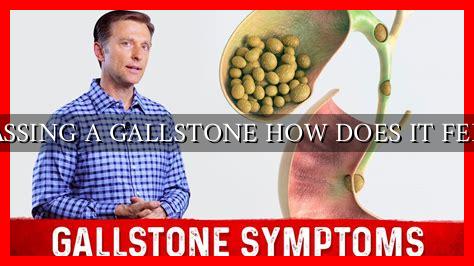-
Table of Contents
PASSING A GALLSTONE: HOW DOES IT FEEL?
Gallstones are small, hard deposits that form in the gallbladder, a small organ located beneath the liver. These stones can vary in size and composition, and they can cause a range of symptoms when they pass through the bile ducts. One of the most common questions people have about gallstones is how it feels when they pass. In this article, we will explore the sensations and experiences associated with passing a gallstone.
Understanding Gallstones
Before delving into the experience of passing a gallstone, it is important to understand what gallstones are and how they form. Gallstones are typically made of cholesterol or bilirubin, a pigment produced by the liver.
. They can range in size from a grain of sand to a golf ball and can cause blockages in the bile ducts, leading to pain and discomfort.
Symptoms of Gallstones
When a gallstone passes through the bile duct, it can cause a range of symptoms, including:
- Sharp pain in the upper abdomen
- Back pain between the shoulder blades
- Nausea and vomiting
- Jaundice (yellowing of the skin and eyes)
These symptoms can vary in intensity depending on the size and location of the gallstone. In some cases, a gallstone may pass without causing any noticeable symptoms, while in others, it can lead to severe pain and complications.
How Does It Feel to Pass a Gallstone?
Passing a gallstone can be a painful and intense experience. Many people describe the sensation as a sharp, stabbing pain in the upper abdomen that radiates to the back or shoulder blades. The pain can come on suddenly and may be accompanied by nausea and vomiting. Some people also report feeling a sense of relief once the gallstone has passed.
One common misconception is that passing a gallstone is similar to passing a kidney stone. While both conditions can cause intense pain, the sensations are different due to the location and size of the stones. Kidney stones typically cause pain in the lower back and abdomen, while gallstones cause pain in the upper abdomen and back.
Case Studies and Statistics
According to the American College of Gastroenterology, gallstones affect approximately 10-15% of the adult population in the United States. While not all gallstones cause symptoms, those that do can lead to complications such as inflammation of the gallbladder or blockage of the bile ducts.
One case study published in the Journal of Gastroenterology and Hepatology reported on a patient who experienced severe pain and jaundice due to a large gallstone blocking the bile duct. The patient underwent a procedure to remove the stone, and their symptoms resolved after treatment.
Summary
In conclusion, passing a gallstone can be a painful and intense experience characterized by sharp abdominal pain, nausea, and vomiting. While not all gallstones cause symptoms, those that do can lead to complications and require medical intervention. It is important to seek medical attention if you experience symptoms of gallstones to prevent further complications.
For more information on gallstones and their symptoms, visit Mayo Clinic.





